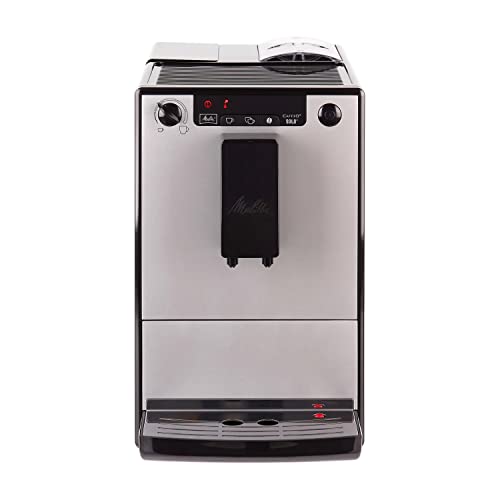Whole Bean Coffee Machine Beans
If your customers are concerned about their environmental impact they might be shocked to discover that whole bean coffee machines create a lot of waste in the form of grounds.
The good news is that beans have an incredible flavour and, when stored in an airtight, dark container, they can last for ages.
1. Roasted Beans
The first coffee beans that are harvested are green and can't be used for brewing your morning cup of coffee until they have been roast. Roasting is the complex chemical process that transforms raw coffee beans into delicious, aromatic coffee we enjoy every day.
There are various roasts that determine the flavor and strength of coffee brewed. The different roast degrees are determined by the amount of time that beans are roasted for and also influence how much caffeine is in the final beverage.
Light roasts are cooked for the shortest time possible and are distinguished by their light brown color. They also do not have oil on the beans. Around 350o-400o, the beans begin to steam as internal water vapors begin to escape. You'll hear the first crack shortly thereafter. The first crack is a sign that the beans will soon be ready to be brewed.
During the roasting process sugars are caramelized and aromatic compounds are created. These volatile and nonvolatile substances create the distinctive taste and aroma. It is essential not to over-roast the beans during this stage since they may lose their characteristic flavor or taste, or even become bitter. After the roasting is finished and the beans have been cooled, they are placed in a cool air flow or water.
2. Water Temperature
When you're brewing coffee, water temperature is one of the most important factors. Too hot and you'll run the risk of over extraction, leaving the brew bitter; too cold, and you'll get weak or even sour coffee. A good rule of thumb is to use filtered or bottled water, should you need to, and then heat your equipment prior to making your coffee.
The more heated the water, quicker it can dissolve things such as flavor compounds and oils from the coffee grounds. The ideal temperature to brew coffee is between 195-205 degrees Fahrenheit. This is just below the boiling point. This range is a favorite choice for coffee experts around the world and it works for all brewing methods.
The exact temperature of the brewing process isn't always accurate, as some heat is lost through evaporate. This is especially true for manual methods like pour-over and French press. The final temperature of the brew can be affected by differences in the thermal mass and materials of the various brewing equipment.
In general generally, a higher brew temperature results in a stronger cup of coffee, however this isn't the situation for all sensory qualities. Certain studies have shown that chocolate, bitter and roast flavors are more intense when the coffee is brewed at higher temperatures. go!! , such as sweet, also diminish when temperatures increase.
3. Grind
Even the best beans, perfect roast, and filtered fresh water can fail to yield a delicious cup of coffee if the grinding isn't properly handled. The size of the beans that are ground is an important factor in determining flavor and strength. It is crucial to be in control of this aspect to play around with recipes and ensure consistency.
The size of the ground bean after it has been crushed is known as the grind size. Depending on the coffee brewing method, different grind sizes are ideal. For instance coarsely ground beans result in a weak cup coffee, whereas the fine grind can result in a bitter cup.
When choosing a coffee grinder it is crucial to look for models that have uniform grinding for the best consistency. Burr grinder can facilitate this and helps to ensure that the coffee grounds are of an equal size. Blade grinders can be uneven and can result in uneven grounds.
If you want to get the most of your espresso maker, you should consider purchasing a machine with a built-in grinder and brewing unit. This will allow the beans to be brewed to their optimal freshness and eliminate the need for pre-ground coffee. The Melitta Bialetti Mypresso combines these features in an elegant and modern design. It has a variety of recipes, 8 customized user profiles, and a smartphone app for full control. It has a dual-hopper that is compatible with whole and ground beans.
4. Brew Time
If the duration of the brew is not long enough, it will cause underextraction. Too long and you risk overextraction. This will result in bitter compounds destroying pleasant sugars and flavors and leave a sour, bitter taste in your beverage.
If your coffee brewing time is excessively long, you'll lose the sweet spot that is optimal for extraction. This can lead to weak, watery and acidic coffee. The ideal brewing time is contingent on the grind size and the amount of ground used, and the brew method.

The best bean-to cup machines have a grinder that is of high-quality with a variety of settings. This allows you to experiment and find the perfect combination of brew time and temperature for your favorite coffees.
The brewing process uses more energy per unit of coffee than any other step in the supply chain. Therefore, it is important to know how to regulate the temperature of the brew in order to reduce waste and improve the taste. It isn't easy to control the extraction process with precision. This is due to the variation of particle sizes, kinetics of dissolution, roasting process and equipment, character of the water, etc. This study examined the variation of all of these parameters, and measured TDS and PE to assess how they affect the taste of the coffee. The TDS and PE values were not significant, even though there was some variation in the brews. This could be due to channelling.
